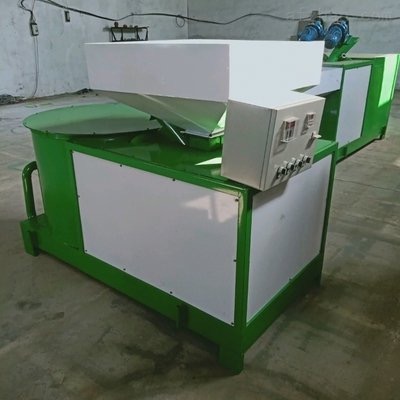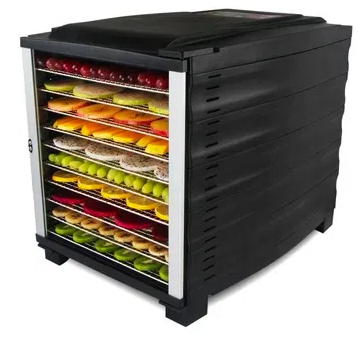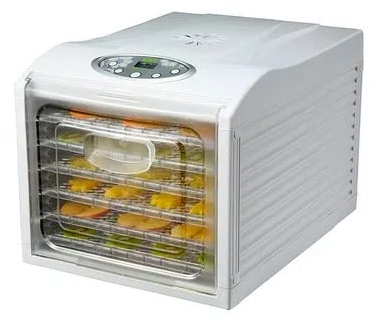
Content Menu
● Understanding Heat Pump Dryers
>> Key Components of a Heat Pump Dryer
● Advantages of 110V Heat Pump Dryers
● How 110V Heat Pump Dryers Work
● Applications in the Food Industry
● Comparison with Traditional Dryers
● Conclusion
● Frequently Asked Questions
>> 1. What is the main advantage of using a heat pump dryer for food?
>> 2. Can heat pump dryers be used for all types of food?
>> 3. How does the drying time compare between heat pump dryers and traditional dryers?
>> 4. Are heat pump dryers environmentally friendly?
>> 5. What maintenance is required for a heat pump dryer?
In the world of food processing, drying is a crucial step that significantly affects the quality, shelf life, and flavor of food products. As a manufacturer of food drying machines in China, we understand the importance of efficient drying technology. One of the most innovative solutions in this field is the heat pump dryer, particularly the 110V models. This article will explore how 110V heat pump dryers compare to traditional dryers, focusing on their advantages, operational mechanisms, and applications in the food industry.

Understanding Heat Pump Dryers
Heat pump dryers utilize a refrigeration cycle to remove moisture from food products. Unlike traditional dryers that rely on direct heat sources, heat pump dryers operate by circulating air through a closed-loop system. This method allows for lower drying temperatures, which is particularly beneficial for preserving the nutritional value and flavor of food.
Key Components of a Heat Pump Dryer
1. Evaporator: Absorbs heat from the air and evaporates refrigerant.
2. Compressor: Increases the pressure and temperature of the refrigerant.
3. Condenser: Releases heat to the drying chamber, allowing moisture to evaporate from the food.
4. Expansion Valve: Regulates the flow of refrigerant into the evaporator.
Advantages of 110V Heat Pump Dryers
1. Energy Efficiency: 110V heat pump dryers are designed to be energy-efficient, consuming significantly less electricity compared to traditional dryers. This efficiency is achieved through the recycling of heat within the system, which reduces the overall energy consumption.
2. Lower Operating Temperatures: The ability to operate at lower temperatures is a significant advantage for food drying. Traditional dryers often use high heat, which can degrade the quality of sensitive food items. Heat pump dryers maintain optimal drying conditions, preserving the color, flavor, and nutritional content of the food.
3. Versatility: Heat pump dryers can handle a wide variety of food products, including fruits, vegetables, herbs, and meats. This versatility makes them an excellent choice for food manufacturers looking to diversify their product offerings.
4. Environmentally Friendly: With a focus on sustainability, heat pump dryers produce less carbon footprint compared to traditional dryers. Their energy-efficient design contributes to lower greenhouse gas emissions, making them a more environmentally friendly option.
5. Consistent Drying Results: The controlled environment within a heat pump dryer ensures uniform drying, reducing the risk of over-drying or under-drying. This consistency is crucial for maintaining product quality and meeting industry standards.
How 110V Heat Pump Dryers Work
The operation of a 110V heat pump dryer involves several stages:
1. Air Intake: Ambient air is drawn into the dryer, where it passes over the evaporator coil. The refrigerant inside the coil absorbs heat from the air, causing it to evaporate.
2. Moisture Removal: As the air heats up, it can hold more moisture. The warm, moist air is then directed into the drying chamber, where it circulates around the food products.
3. Condensation: The moisture-laden air passes over the condenser coil, where it cools down, and the moisture condenses back into liquid form. This water is collected and removed from the system.
4. Recycling Heat: The cooled air is reheated by the refrigerant before being recirculated back into the drying chamber, creating a continuous cycle of heat and moisture removal.

Applications in the Food Industry
Heat pump dryers are increasingly being adopted in various sectors of the food industry:
1. Fruit and Vegetable Drying: The gentle drying process helps retain the natural color and flavor of fruits and vegetables, making them more appealing to consumers. For instance, dried apples and strawberries maintain their vibrant colors and sweet flavors, which are essential for both retail and culinary uses.
2. Herb Drying: For herbs, maintaining essential oils and flavors is critical. Heat pump dryers provide the ideal conditions for drying without compromising quality. Herbs like basil, oregano, and thyme can be dried effectively, preserving their aromatic properties for use in cooking and food production.
3. Meat Drying: In the production of jerky and other dried meat products, heat pump dryers ensure that moisture is removed effectively while preserving taste and texture. The controlled drying environment prevents the growth of bacteria, ensuring food safety.
4. Snack Food Production: The snack food industry benefits from heat pump dryers, as they can be used to create healthy snacks from fruits and vegetables. Products like kale chips and dried mango slices are popular among health-conscious consumers, and heat pump dryers help maintain their nutritional value.
5. Dehydrated Meal Kits: With the rise of meal kit delivery services, heat pump dryers play a vital role in producing dehydrated ingredients that can be easily rehydrated at home. This convenience appeals to busy consumers looking for quick meal solutions.
Comparison with Traditional Dryers
When comparing 110V heat pump dryers to traditional dryers, several factors come into play:
1. Energy Consumption: Traditional dryers often consume more energy due to their reliance on high heat. In contrast, heat pump dryers use a fraction of that energy, making them more cost-effective in the long run. This is particularly important for businesses looking to reduce operational costs.
2. Quality of Dried Products: The lower drying temperatures of heat pump dryers help maintain the integrity of food products, while traditional dryers may lead to loss of flavor and nutrients. For example, traditional methods may cause fruits to lose their vibrant colors and essential vitamins, while heat pump drying preserves these qualities.
3. Operational Costs: Although the initial investment in a heat pump dryer may be higher, the long-term savings on energy bills and improved product quality can offset these costs. Businesses that prioritize quality and sustainability will find heat pump dryers to be a worthwhile investment.
4. Space Efficiency: Many 110V heat pump dryers are designed to be compact and space-efficient, making them suitable for small-scale operations or facilities with limited space. Traditional dryers can be bulkier and require more installation space.
5. User-Friendly Features: Modern heat pump dryers often come equipped with advanced technology, such as digital controls and programmable settings, allowing users to customize drying cycles based on specific food types. Traditional dryers may lack these features, making them less versatile.
Conclusion
In conclusion, 110V heat pump dryers represent a significant advancement in food drying technology. Their energy efficiency, lower operating temperatures, and versatility make them an ideal choice for food manufacturers looking to improve their drying processes. As the demand for high-quality dried food products continues to grow, investing in heat pump dryer technology can provide a competitive edge in the market.

Frequently Asked Questions
1. What is the main advantage of using a heat pump dryer for food?
The main advantage is energy efficiency and the ability to dry food at lower temperatures, preserving quality and nutrients.
2. Can heat pump dryers be used for all types of food?
Yes, heat pump dryers are versatile and can be used for fruits, vegetables, herbs, and meats.
3. How does the drying time compare between heat pump dryers and traditional dryers?
Drying times can vary, but heat pump dryers often provide more consistent results, leading to better quality products.
4. Are heat pump dryers environmentally friendly?
Yes, they consume less energy and produce lower emissions compared to traditional dryers.
5. What maintenance is required for a heat pump dryer?
Regular cleaning of filters and checking refrigerant levels are essential for optimal performance.












